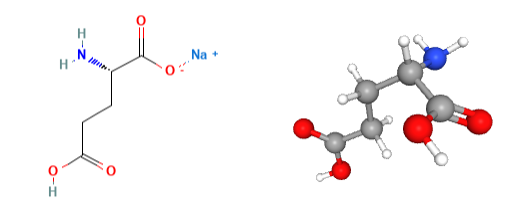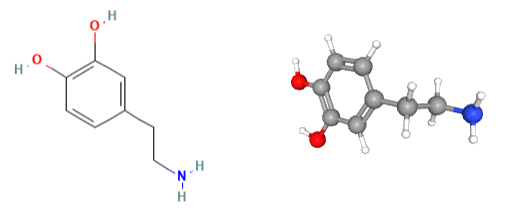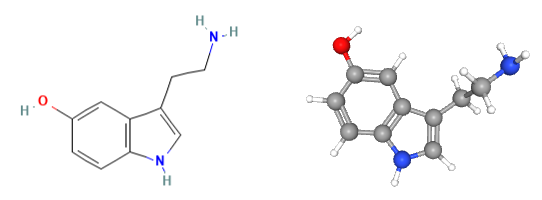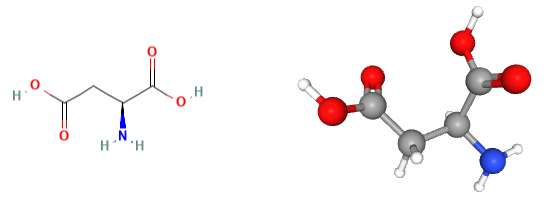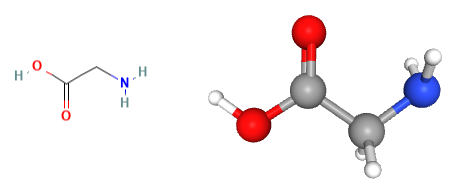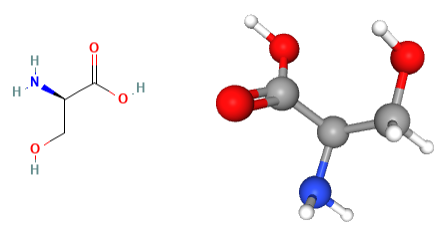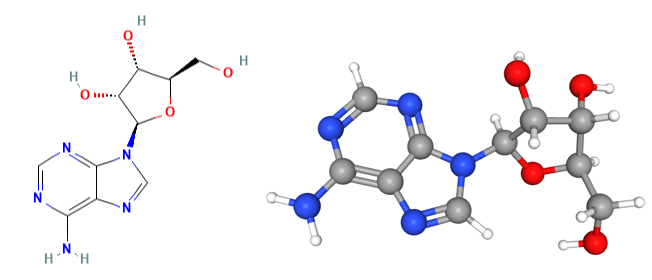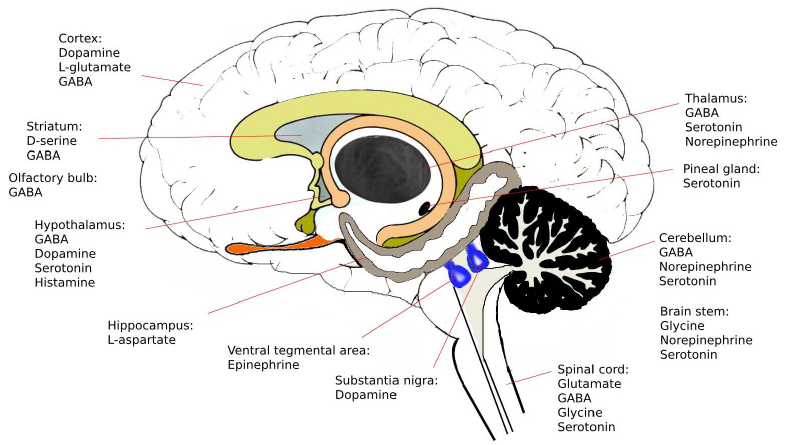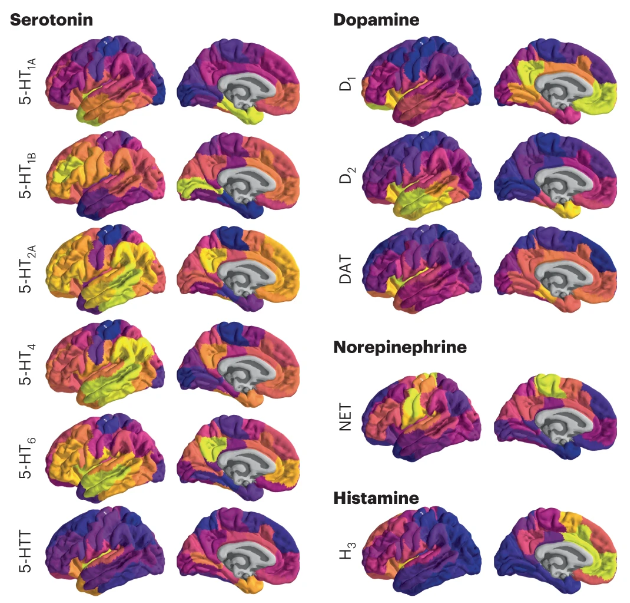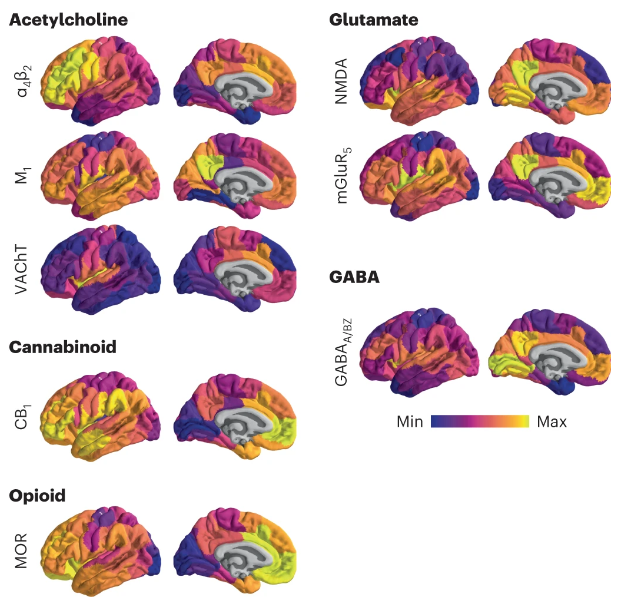|
|
|||||||||||||||||||||||||||||||||||||||||||||||||||||||||||||||||||||||||||||||||||||||||||||||||||||||||||||||||||||||||||||||||||||||||||||||||||||||||||||||||||||||||||||||||||||||||||||||||||||||||||||||||||||||||||||||||||||||||||||
|
Neuro Transmitters are special type of chemicals that functions as a coveying material which transfer a signal from one neuron to another neuron. More specifically, these chemical (called neuro transmitter) is released from a part of one neuron (pre-synaptic neuron), swim through space called synaptic gap(synaptic cleft) and reaches the destination which is a part of another neuron (called post-synaptic neuron). The purpose of this note is not about how the neurotransmitter acts
within synaptic gap, but the functionality and chemical nature of various neurotransmitters. (
List of NeurotransmittersHere I will introduce a list of neurotransmitters and the list will get longer as I learn more on this subject. Don't try to memorize everything in the list. It would not be much of use if you just memorize and it will be confusing as well since some neurotransmitters work differently depending on which part of the brain (or nerveous system) they are being used. Use this page as a mini dictionary or cheatsheet whenever you want to check about any specific neurotransmitter while you are reading text or watching lectures.
AcetylcholineAcetylcholine is a neurotransmitter that plays a crucial role in various functions throughout the body. In the central nervous system, it is involved in learning, memory, and attention. In the peripheral nervous system, acetylcholine is essential for muscle movement, as it is the primary neurotransmitter at neuromuscular junctions. Additionally, it plays a role in the regulation of the autonomic nervous system, influencing functions such as heart rate, digestion, and respiratory rate. Acetylcholine is synthesized from choline and acetyl-CoA by the enzyme choline acetyltransferase, and its action is terminated by the enzyme acetylcholinesterase, which breaks it down into choline and acetate.
Image Source : PubChem Functions in Peripheral Nervous System (PNS)
Functions in Brain and Central Nervous System (CNS)
Medical Conditions related to Acetylcholine Dysfunction
Medications that affect Acetylcholine
GABA (γ-Amino Butyric Acid)Gamma-aminobutyric acid (GABA) is the primary inhibitory neurotransmitter in the central nervous system. It plays a crucial role in regulating neuronal excitability by inhibiting the firing of neurons, thereby creating a balance between excitation and inhibition in the brain. GABA is essential for maintaining proper brain function and preventing overstimulation, which can lead to conditions such as anxiety, seizures, and insomnia. GABA is synthesized from the amino acid glutamate by the enzyme glutamic acid decarboxylase and is broken down by the enzyme GABA transaminase. GABA acts on two types of receptors: GABA-A and GABA-B. GABA-A receptors are ionotropic, meaning they are ligand-gated ion channels, while GABA-B receptors are metabotropic, meaning they are G-protein coupled receptors. Both types of receptors contribute to the overall inhibitory effects of GABA in the brain.
Image Source : PubChem Function :
Medical Conditions related to decreased GABA level :
Medical Conditions related to GABA Imbalance :
GlutamateGlutamate is the primary excitatory neurotransmitter in the central nervous system, playing a crucial role in neuronal communication, learning, memory, and synaptic plasticity. It helps transmit nerve impulses between neurons and is involved in various cognitive functions, including attention and information processing. Glutamate is synthesized from the amino acid glutamine by the enzyme glutaminase and is broken down by the enzyme glutamate dehydrogenase or through the glutamate-glutamine cycle. Glutamate acts on several types of receptors, including ionotropic receptors like NMDA, AMPA, and kainate receptors, and metabotropic glutamate receptors (mGluRs). Imbalances in glutamate levels or receptor function can lead to excitotoxicity, where excessive glutamate activity damages or kills neurons, which is implicated in various neurological disorders such as Alzheimer's disease, Parkinson's disease, and multiple sclerosis.
Image Source : PubChem Function :
Medical Conditions related to Glutamate dysfunction :
Medical Condition related to too much Glutamate :
Medical Conditions related to too little Glutamate
HistamineHistamine is a neurotransmitter and biogenic amine involved in various physiological functions in the central and peripheral nervous system. In the central nervous system, histamine plays a role in regulating the sleep-wake cycle, arousal, and appetite. It also modulates cognitive functions such as learning and memory. Histamine is synthesized from the amino acid histidine by the enzyme histidine decarboxylase and is inactivated by the enzymes histamine-N-methyltransferase and diamine oxidase. Histamine promotes wakefulness and arousal by activating histamine receptors in the brain. It counteracts the actions of sleep-promoting neurotransmitters, such as GABA and adenosine, helping maintain a balance between sleep and wakefulness. Histamine acts on four types of receptors, H1, H2, H3, and H4, which are G-protein coupled receptors. In the peripheral nervous system, histamine is involved in immune responses, inflammation, and allergic reactions, primarily through its action on H1 and H2 receptors. It also has a role in regulating gastric acid secretion in the stomach, mainly via H2 receptors. Antihistamines, which are medications commonly used to treat allergies, work by blocking the action of histamine at its receptors, reducing the symptoms associated with histamine release.
Image Source : PubChem Function
DopamineDopamine is a neurotransmitter that plays a significant role in various brain functions, including motivation, reward, movement, and the regulation of mood. It is synthesized from the amino acid tyrosine, which is first converted to L-DOPA by the enzyme tyrosine hydroxylase, and then to dopamine by the enzyme aromatic L-amino acid decarboxylase. Dopamine acts on five types of receptors, which are G-protein coupled receptors, classified into two families: D1-like (D1 and D5) and D2-like (D2, D3, and D4) receptors. Imbalances in dopamine levels or receptor function have been implicated in several neurological and psychiatric disorders, such as Parkinson's disease, schizophrenia, and addiction. Dopamine is also a precursor to other important neurotransmitters, including norepinephrine and epinephrine.
Image Source : PubChem Function
Medical condition associated with low level of dompamine
Medical condition associated with high level of dompamine
Serotonin / 5-hydroxytryptamine (5-HT)Serotonin, also known as 5-hydroxytryptamine (5-HT), is a neurotransmitter that plays a critical role in regulating mood, appetite, sleep, and cognitive functions such as learning and memory. It is synthesized from the amino acid tryptophan by the enzymes tryptophan hydroxylase and aromatic L-amino acid decarboxylase. Serotonin acts on a variety of receptor types, including fourteen subtypes of G-protein coupled receptors and one ionotropic receptor. These receptors are classified into seven families, from 5-HT1 to 5-HT7. Imbalances in serotonin levels or receptor function have been associated with several mental health disorders, such as depression, anxiety, and obsessive-compulsive disorder. Selective serotonin reuptake inhibitors (SSRIs), a class of antidepressant medications, work by increasing the availability of serotonin in the synaptic cleft, helping to alleviate depressive symptoms. Additionally, serotonin plays a role in the regulation of gastrointestinal function and the cardiovascular system.
Image Source : PubChem Functions :
Signs of Low Serotonin :
NorAdrenaline / Nor EphenephrineNorepinephrine, also known as noradrenaline, is a neurotransmitter and hormone that plays a vital role in the regulation of attention, alertness, and the stress response. It is synthesized from dopamine by the enzyme dopamine beta-hydroxylase and acts on both alpha and beta adrenergic receptors, which are G-protein coupled receptors. In the central nervous system, norepinephrine is involved in modulating cognitive processes, including working memory, decision-making, and the formation of emotional memories. In the peripheral nervous system, it is a major component of the "fight or flight" response, increasing heart rate, blood pressure, and blood flow to muscles. Imbalances in norepinephrine levels or receptor function have been implicated in several mental health disorders, such as depression, anxiety, and attention deficit hyperactivity disorder (ADHD). Some medications, like selective norepinephrine reuptake inhibitors (NRI) and norepinephrine-dopamine reuptake inhibitors (NDRI), work by increasing the availability of norepinephrine in the synaptic cleft, which can help alleviate symptoms of these disorders.
Image Source : PubChem Function
Medical Conditions related to low level of norepinephrine
Medical Conditions related to high level of norepinephrine
Adrenaline /EphenephrineEpinephrine, also known as adrenaline, is a neurotransmitter and hormone primarily involved in the body's "fight or flight" response to stress or danger. It is synthesized from norepinephrine by the enzyme phenylethanolamine N-methyltransferase in the adrenal glands and some neurons in the central nervous system. Epinephrine acts on both alpha and beta adrenergic receptors, which are G-protein coupled receptors, stimulating various physiological changes to prepare the body for action. In the peripheral nervous system, epinephrine increases heart rate, blood pressure, and blood flow to muscles, as well as boosting glucose production and mobilization to provide energy. In the central nervous system, it has a role in modulating cognitive functions, such as memory consolidation, especially for emotionally arousing events. Although epinephrine is not typically considered a major neurotransmitter in the brain, it does contribute to the overall balance of arousal and alertness in conjunction with other neurotransmitters like norepinephrine and dopamine.
Image Source : PubChem Function
Medical Conditions related to low level of norepinephrine
Medical Conditions related to high level of norepinephrine
L-AspartateL-aspartate is an amino acid that also functions as a neurotransmitter in the central nervous system. It has excitatory properties, similar to its more well-known counterpart, glutamate. L-aspartate is involved in the transmission of nerve impulses between neurons, contributing to the regulation of various cognitive functions such as learning, memory, and information processing. L-aspartate acts on specific receptors, including NMDA and some metabotropic glutamate receptors, which are shared with glutamate. Despite its role as an excitatory neurotransmitter, L-aspartate is present in much lower concentrations in the brain compared to glutamate, and its overall contribution to excitatory neurotransmission is less understood. Imbalances in excitatory neurotransmitters like L-aspartate can lead to excitotoxicity, a process where excessive stimulation of neurons results in neuronal damage or death. This has been implicated in several neurological disorders such as Alzheimer's disease, Parkinson's disease, and multiple sclerosis. However, the role of L-aspartate in these conditions is not as well-established as that of glutamate.
Image Source : PubChem Function
GlycineGlycine is an amino acid that functions as an inhibitory neurotransmitter in the central nervous system, particularly in the spinal cord and brainstem. It helps regulate neuronal activity by reducing the excitability of neurons, contributing to a balance between excitation and inhibition in the brain. Glycine is essential for maintaining proper brain function and preventing overstimulation, which can lead to conditions such as seizures and muscle spasms. Glycine acts on glycine receptors, which are ligand-gated ion channels that allow the influx of chloride ions when activated, resulting in hyperpolarization of the neuron and reducing the likelihood of generating an action potential. Glycine also serves as a co-agonist at NMDA receptors along with glutamate, where it modulates the excitatory effects of glutamate and plays a role in synaptic plasticity, learning, and memory. Imbalances in glycine levels or receptor function have been implicated in various neurological disorders, such as hyperekplexia, a rare genetic disorder characterized by exaggerated startle responses, and some forms of epilepsy. Glycine reuptake inhibitors, which increase the availability of glycine in the synaptic cleft, have been explored as potential therapeutic agents for these and other neurological conditions.
Image Source : PubChem Function
D-SerineD-serine is an amino acid that functions as a neurotransmitter and neuromodulator in the central nervous system. It plays a crucial role in modulating synaptic plasticity, which underlies processes such as learning and memory. D-serine is synthesized from L-serine by the enzyme serine racemase, which converts L-serine into D-serine by changing its stereochemistry. D-serine acts as a co-agonist at NMDA receptors, along with glutamate. It binds to a specific site on the NMDA receptor called the glycine modulatory site, which enhances the receptor's response to glutamate. This interaction facilitates the opening of the NMDA receptor's ion channel, allowing calcium ions to enter the neuron and trigger a series of intracellular events that promote synaptic plasticity. Imbalances in D-serine levels or its interaction with NMDA receptors have been implicated in several neurological and psychiatric disorders, such as schizophrenia, Alzheimer's disease, and neuropathic pain. Research into the role of D-serine in these conditions has led to the development of potential therapeutic agents that target D-serine metabolism or its interaction with NMDA receptors.
Image Source : PubChem Function :
AdenosinAdenosine is a neuromodulator and a signaling molecule that plays a crucial role in regulating various physiological processes, including sleep and wakefulness, energy metabolism, and cardiovascular function. It is formed as a byproduct of cellular metabolism, particularly during energy-consuming processes that break down adenosine triphosphate (ATP) into adenosine diphosphate (ADP) and adenosine monophosphate (AMP). In the central nervous system, adenosine acts on four types of adenosine receptors (A1, A2A, A2B, and A3), which are G-protein coupled receptors. Activation of these receptors can lead to either inhibitory or excitatory effects, depending on the receptor subtype and the specific brain region involved. Adenosine is involved in promoting sleep and suppressing arousal, as its levels in the brain gradually increase during wakefulness and decrease during sleep. Adenosine also has vasodilatory effects in the cardiovascular system, helping regulate blood flow and oxygen delivery. It is involved in the modulation of inflammation and immune responses as well. Imbalances in adenosine levels or receptor function have been implicated in various conditions, such as sleep disorders, chronic pain, and neurodegenerative diseases. Caffeine exerts its wakefulness-promoting effects by antagonizing adenosine receptors, reducing the inhibitory actions of adenosine on neuronal activity.
Image Source : PubChem Function :
EndorphineEndorphins are endogenous opioid peptides that function as neurotransmitters and neuromodulators in the central and peripheral nervous systems. They are produced and released by neurons in response to various stimuli, such as stress, pain, and exercise. Endorphins have a similar structure and function to exogenous opioids like morphine, which is why they are often referred to as the body's natural painkillers. Endorphins bind to opioid receptors (mu, delta, and kappa receptors) in the brain and spinal cord, where they help regulate pain perception, mood, and reward. By binding to these receptors, endorphins can inhibit the transmission of pain signals, leading to analgesia, or pain relief. They are also involved in the modulation of the body's stress response and the regulation of emotions, such as pleasure and euphoria. An increase in endorphin levels has been linked to the phenomenon known as "runner's high," a state of euphoria and well-being that can occur during prolonged aerobic exercise. In addition to their role in pain relief and mood regulation, endorphins have been implicated in various physiological processes, including immune function and the regulation of appetite and body weight. Imbalances in endorphin levels or function have been associated with various conditions, such as chronic pain, depression, and addiction. OxytocinOxytocin is a neuropeptide and hormone that plays a critical role in social bonding, trust, empathy, and various reproductive processes. It is synthesized in the hypothalamus and released into the bloodstream by the posterior pituitary gland. In addition to its hormonal actions, oxytocin also acts as a neurotransmitter within the brain, modulating the activity of specific neural circuits. Oxytocin is involved in a variety of social behaviors, such as pair bonding, maternal behaviors, and social recognition. It has been referred to as the "love hormone" or "cuddle hormone" due to its role in promoting attachment and affection between individuals. Oxytocin is also essential for various reproductive processes, including childbirth and lactation. During labor, oxytocin is released in large amounts, causing uterine contractions and facilitating the delivery of the baby. After birth, oxytocin promotes milk let-down in response to a baby's suckling, allowing the mother to breastfeed. In the brain, oxytocin receptors are found in several areas, such as the hypothalamus, amygdala, hippocampus, and nucleus accumbens. The distribution of these receptors enables oxytocin to influence emotional processing, stress regulation, and social cognition. Imbalances in oxytocin levels or function have been implicated in various psychiatric conditions, such as autism spectrum disorder, social anxiety, and postpartum depression. VasopressineVasopressin, also known as antidiuretic hormone (ADH), is a neuropeptide and hormone that plays important roles in fluid balance, blood pressure regulation, and social behavior. Vasopressin is synthesized in the hypothalamus and released into the bloodstream by the posterior pituitary gland. In addition to its hormonal actions, vasopressin also functions as a neurotransmitter within the brain, modulating the activity of specific neural circuits. One of vasopressin's primary functions is to regulate water balance in the body by controlling the reabsorption of water in the kidneys. In response to dehydration or low blood volume, vasopressin is released, causing the kidneys to conserve water and produce more concentrated urine. This helps maintain blood volume and blood pressure. Vasopressin also has vasoconstrictive properties, meaning it can narrow blood vessels, which can further contribute to maintaining blood pressure during times of stress or hemorrhage. In the brain, vasopressin receptors are found in several areas, such as the hypothalamus, amygdala, and hippocampus. The distribution of these receptors allows vasopressin to influence social behavior, memory, and stress regulation. Vasopressin has been implicated in social bonding, aggression, and pair-bonding in various animal species. Imbalances in vasopressin levels or function have been associated with various conditions, such as diabetes insipidus, hyponatremia, and certain psychiatric disorders. Problems that are releated to NeurotransmittersIn order for Nuerotransmitters to function properly, they should be as follows :
Most of the problems that are related to Neurotransmitters are because those transmitters does not work as listed above. Common types of Neurotransmitter related problems can be listed as in this document as below.
Distribution of Neurotransmitters in BrainNeurotransmitters are distributed throughout the brain, with different regions and types of neurons expressing specific neurotransmitter systems. The distribution of neurotransmitters is crucial for the proper functioning of various brain circuits and the regulation of numerous cognitive, emotional, and physiological processes.
Image Source : A Review of Neurotransmitters Sensing Methods for Neuro-Engineering Research
Image Source : Mapping neurotransmitter systems to the structural and functional organization of the human neocortex Color Coding : dark red (lowest intensity) , bright yellow or white (highest intensity) Agonist vs Antagonist and othersA neurotransmitter is like a key that opens a lock. The lock is a receptor on a nerve cell. When the key opens the lock, it sends a signal in your brain. An An In addition to agonists and antagonists, there are other categories of drug actions, including:
< Examples of Antagonist >
< Examples of Agonist >
< Examples of Inverse Agonists >
< Examples of Allosteric Modulators >
< Examples of Partial Agonists >
< Examples of Neutral Antagonists >
Opposing Neurotransmitters Maintaining Balance in the Nervous SystemIn the nervous system, neurotransmitters play critical roles in maintaining balance and functionality by often having opposing effects, Here are some examples: These are just a few examples of how multiple neurotransmitters work together in opposing ways to maintain the delicate balance necessary for normal nervous system function. It is important to note that this is a simplification of a complex system and that other neurotransmitters and factors are also involved. Glutamate and GABA:
The balance between glutamate and GABA is crucial for normal brain function. Too much glutamate can lead to overexcitation and seizures, while too much GABA can lead to under-excitation and sedation. Acetylcholine and Dopamine in the Basal Ganglia:
The balance between these neurotransmitters is essential for smooth and coordinated movements. Imbalance can contribute to movement disorders such as Parkinson's disease (associated with dopamine deficiency) and Huntington's disease (associated with acetylcholine and GABA deficiencies). Norepinephrine and Serotonin in Mood Regulation:
While their relationship is not strictly opposite, the balance between norepinephrine and serotonin is important for mood stability. Disruptions in this balance can contribute to mood disorders such as depression and anxiety. Histamine and Adenosine in Wakefulness and Sleep:
The balance between histamine and adenosine helps regulate the sleep-wake cycle. Antihistamines, which block histamine receptors, can cause drowsiness as a side effect due to this interaction. Substance P and Opioid Peptides in Pain Perception:
These neurotransmitters work in opposition to modulate pain perception. The release of opioid peptides helps to dampen the pain signals transmitted by substance P. Reference
YouTube
|
|||||||||||||||||||||||||||||||||||||||||||||||||||||||||||||||||||||||||||||||||||||||||||||||||||||||||||||||||||||||||||||||||||||||||||||||||||||||||||||||||||||||||||||||||||||||||||||||||||||||||||||||||||||||||||||||||||||||||||||


